We’ve all heard it before: opposites attract. Is it the secret ingredient for ever-lasting love or is it merely a myth we tell ourselves in the throes of young romance?
Children’s clothing designer Karina Sandvliet and tattoo artist Kim Rense have seamlessly integrated their apparent differences. Kim’s tattoo business Papanatos has claimed its domain in a former butcher shop. Its dark green walls are lined with black-framed illustrations of vintage planes and portraits of 18th century aristocrats that resemble classical etchings—this blackwork technique has brought the tattoo artist international fame. Across the street in Karina’s recently opened shop Frankey Sue, it still smells of fresh paint. Small items of children’s clothing are hung like miniature artworks, so delicate in their subdued tones, and unique in their intricate details.
“We trade from time to time—furniture for tattoos.”
As different as they may seem, Kim and Karina are a stable unit and have been for the past 20 years. They have blended their singular styles in their calm and eclectic home in a quieter neighborhood in The Hague. The city is familiar with contrasts—both the country’s government and the many beaches draw suits and surfers alike. And yet the contrasts seem effortless, like the feather tattoo on Karina’s right arm, there’s a fleeting lightness to them, a laissez-faire attitude that might make others envious. As entrepreneurs, as partners, and as parents to Sam and Liam, they’ve found a way to make it all work.



-
Karina, have you always been interested in fashion?
Karina: I studied textiles and fashion design at the Royal Academy of Art in The Hague. After a year out working for my dad, I interned as a stylist at Cosmopolitan Magazine. That internship turned into a job and I worked as a stylist for nine years. When I was pregnant with Sam, our oldest son, I decided to go freelance. It wasn’t until Liam was born that I decided I wanted to start my own business—that’s when I launched Frankey’s, soft apparel and accessories for little ones.
-
And what’s your background Kim?
Kim: I’m actually from a family of graphic designers, so it wasn’t surprising that I went into graphic design myself. After my studies, while freelancing for my dad’s advertising agency, I decided to attend the art academy part-time. At that time I was getting a lot of tattoos done and brought along some of my drawings as inspiration for a tattoo I wanted to get. The owner asked if I was interested in doing an apprenticeship there, and before I knew it, I was freelancing, doing the apprenticeship, and attending the academy in the evenings. For a while I tried to balance it all but eventually quit the art academy and continued at the tattoo shop. After three years, I started for myself and shortly after, stumbled upon a former butcher’s shop and knew I had to have it. I started Papanatos five years ago.
-
From graphic design to tattoo art, was it a seamless transition?
Kim: When I was younger I wanted to be an illustrator but out of laziness I never really did anything with it. I started drawing again when I attended the art academy but it wasn’t until I was doing the apprenticeship in the shop that I really got back into it.
“The name Frankey’s refers to being frank, or open and honest—which is what I love about kids.”





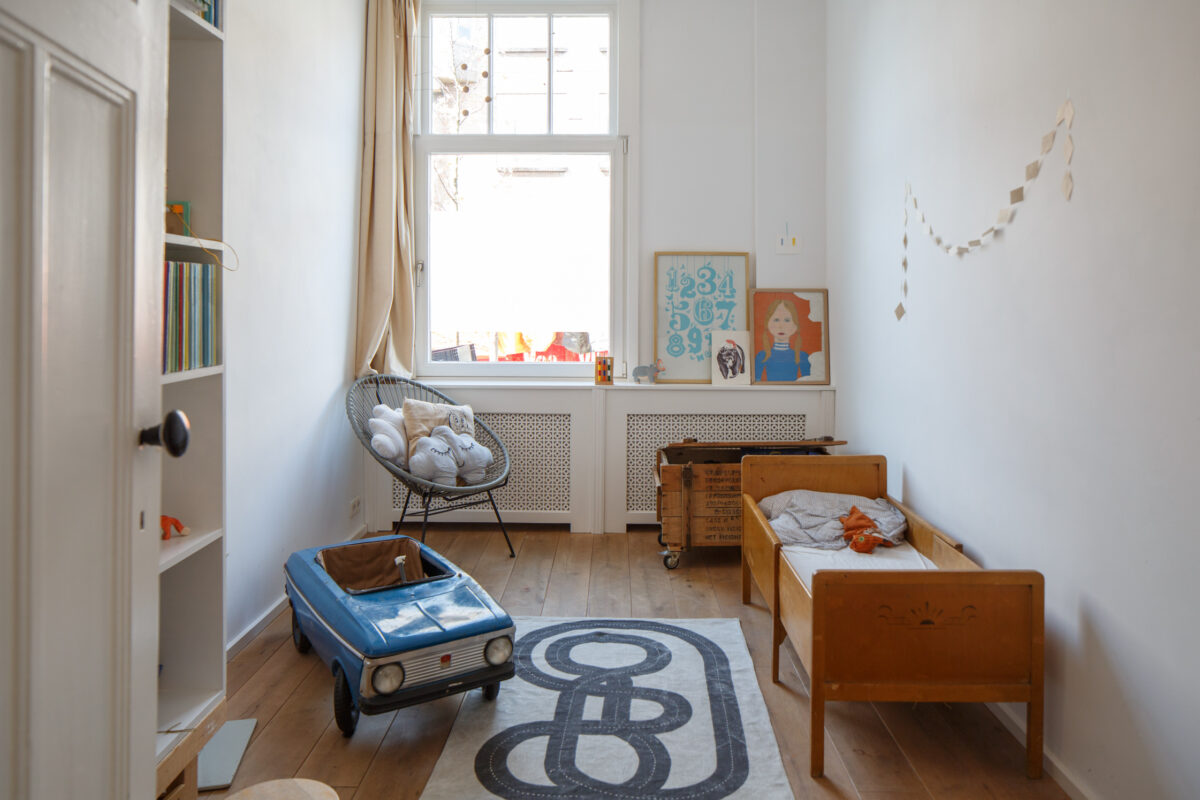
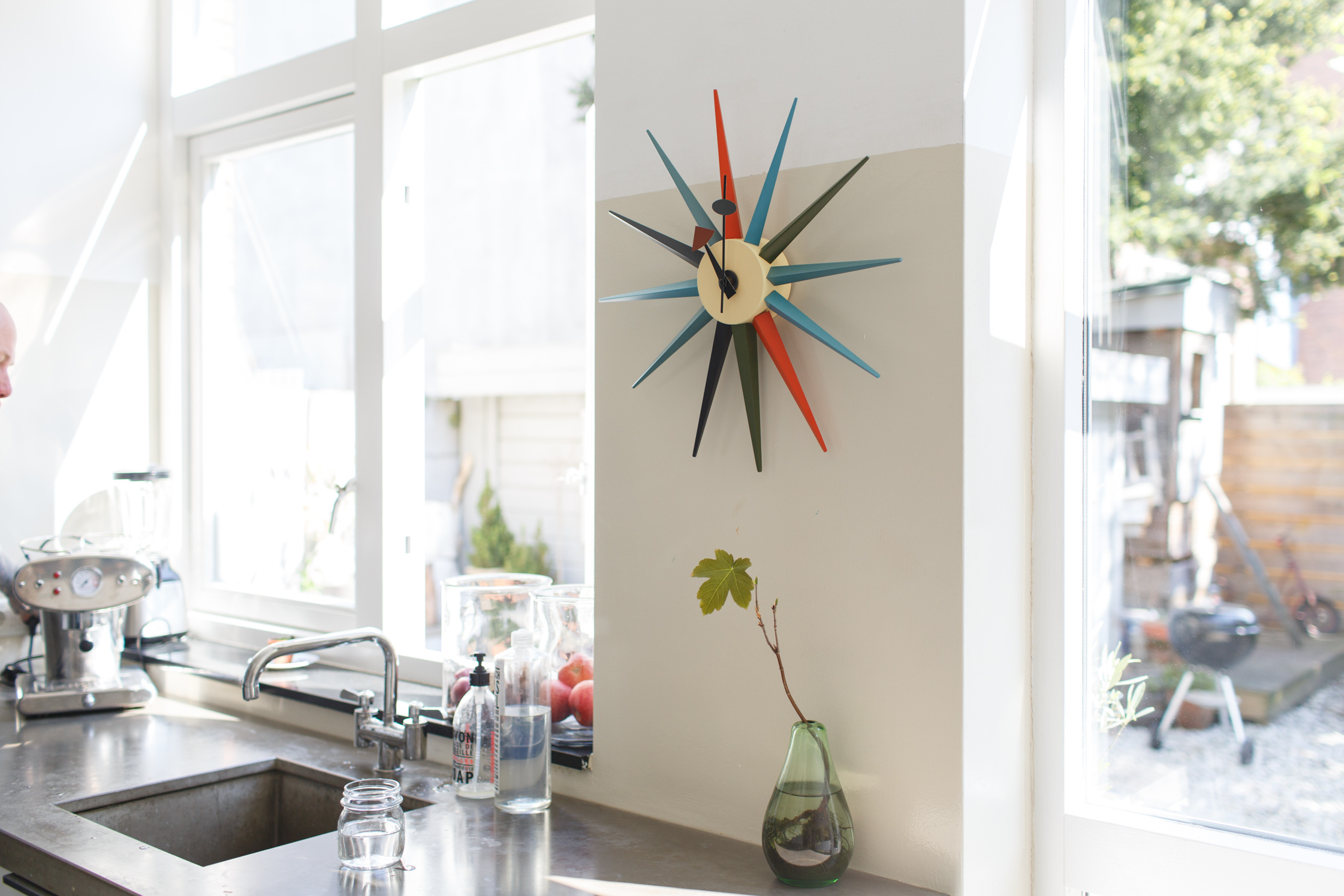


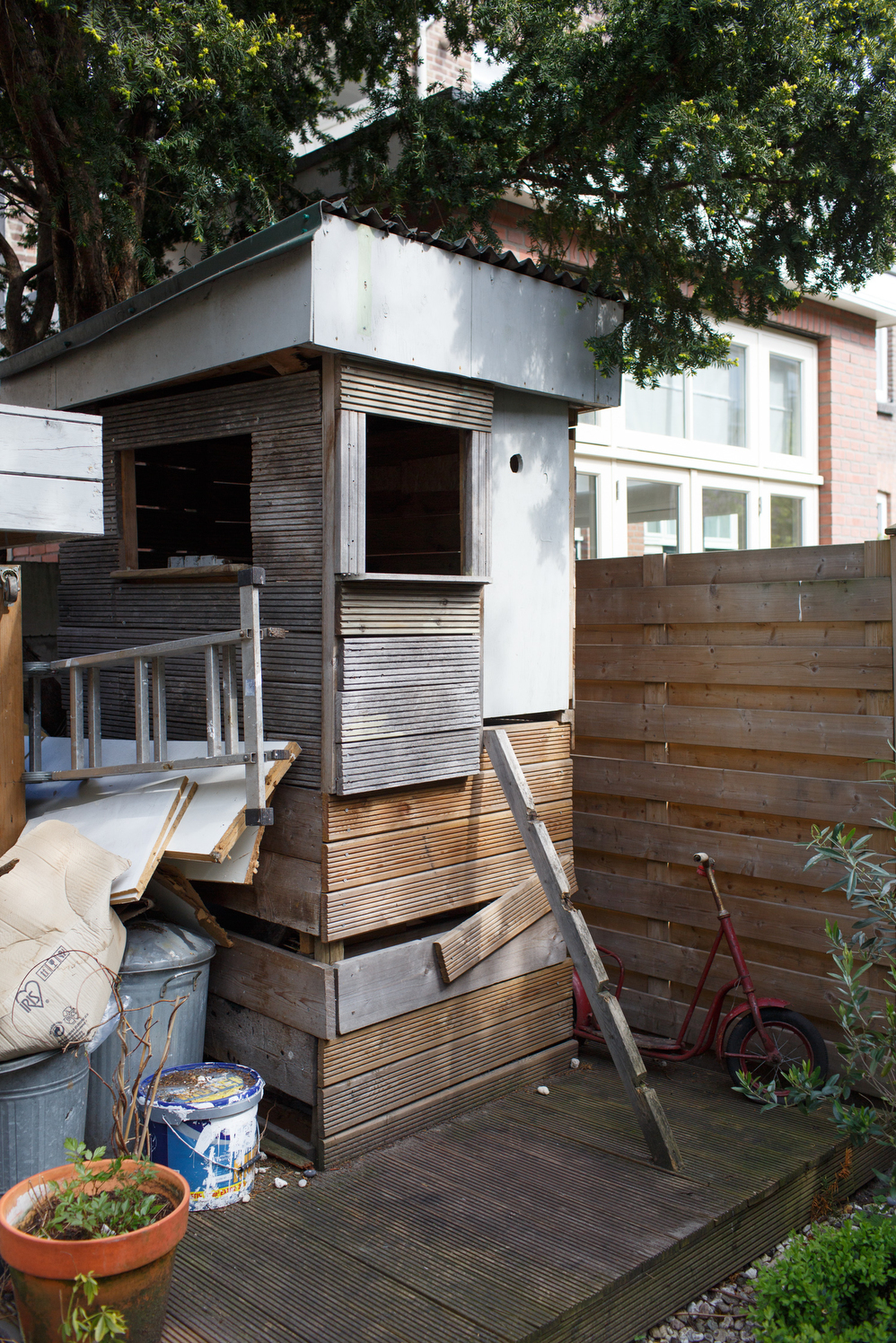

“It’s a little eclectic; we’ve incorporated many different styles but there’s one recurring color: mint blue. It has been a constant color in my life; my childhood room was turquoise, maybe that’s why I had two boys.”
-
Can you tell us about your style of tattooing?
Kim: What I’m doing is called blackwork, or working primarily with black ink. It’s an engraving-like style, reminiscent of older techniques like etching and woodcutting. I use mainly thin lines and dots as shading. It’s funny, the way that I tattoo these days is a lot like how I used to draw when I was five or six years old.
-
Would you say that this type of tattoo has made the shop well known around the world?
Kim: To some degree, yes. I think it also has something to do with the fact that my work was featured in the book, Forever, The New Tattoo by Gestalten just a year or two after the shop opened. It was great publicity, to be honest. Just a few months after the book was released, I was asked to work as a guest artist in a shop in Moscow. Nowadays I get asked to work in tattoo shops around the world (I work at East River in New York City every year), and I invite artists over here. It’s a good way to spread the name of the shop, and to get more clients. It’s quite crazy that you can do this kind of work all over the world.
-
Were some of your tattoos done by artists visiting your shop?
Kim: Some. I usually get my tattoos done when I’m working at another shop or traveling. Guy le Tatooer did my hands, for example. I traveled all the way to this one conference in Paris just because I knew he would be there. When he was tattooing my hands, I told him that if he ever wanted to travel to The Hague to work at my shop, he was more than welcome. A year later, he did just that.
Papanatos Tattoo Parlor
From a former butcher’s shop to Kim’s renowned tattoo studio
“What I’m doing is called blackwork, or working primarily with black ink. It’s an engraving-like style, reminiscent of older techniques like etching and woodcutting.”



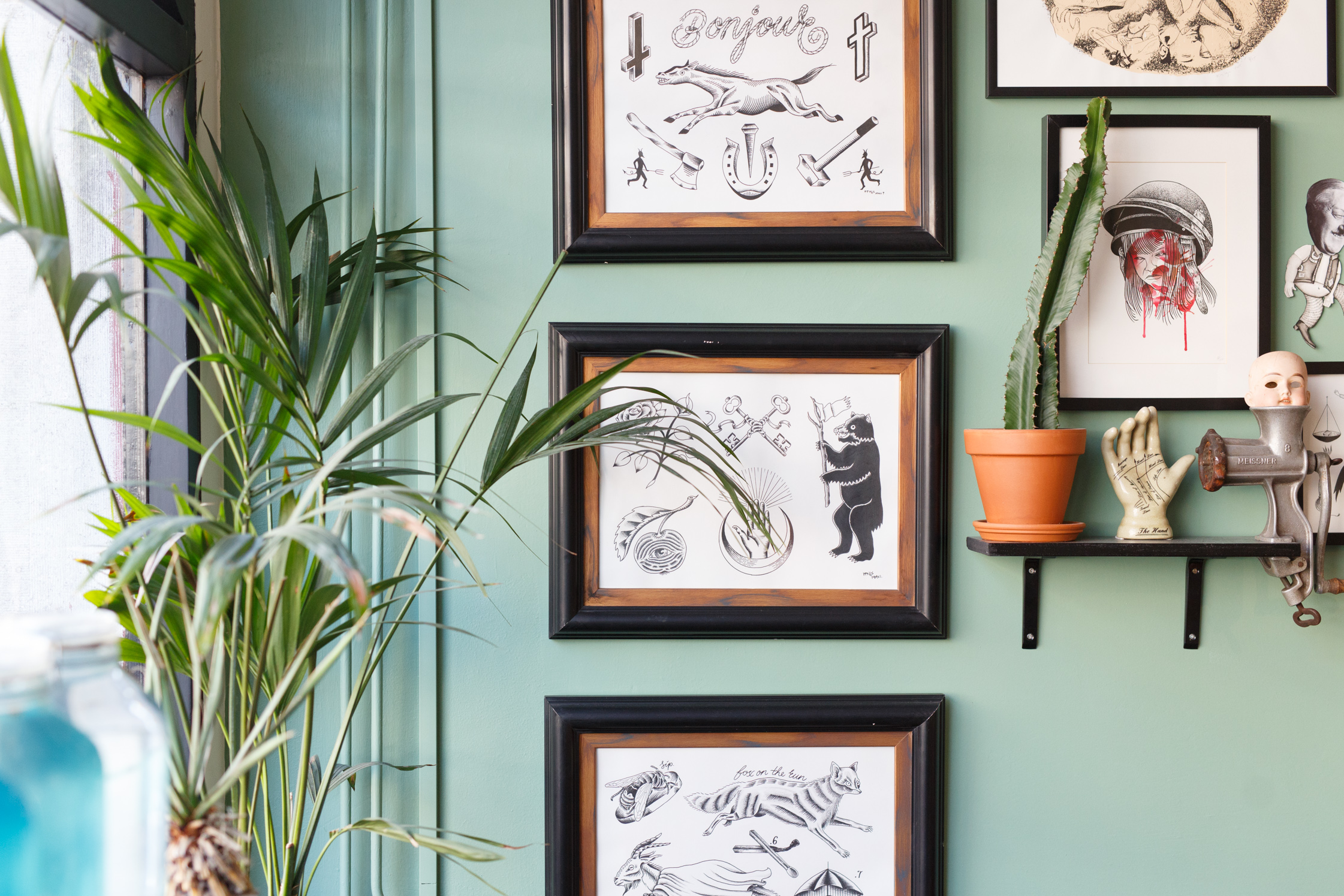


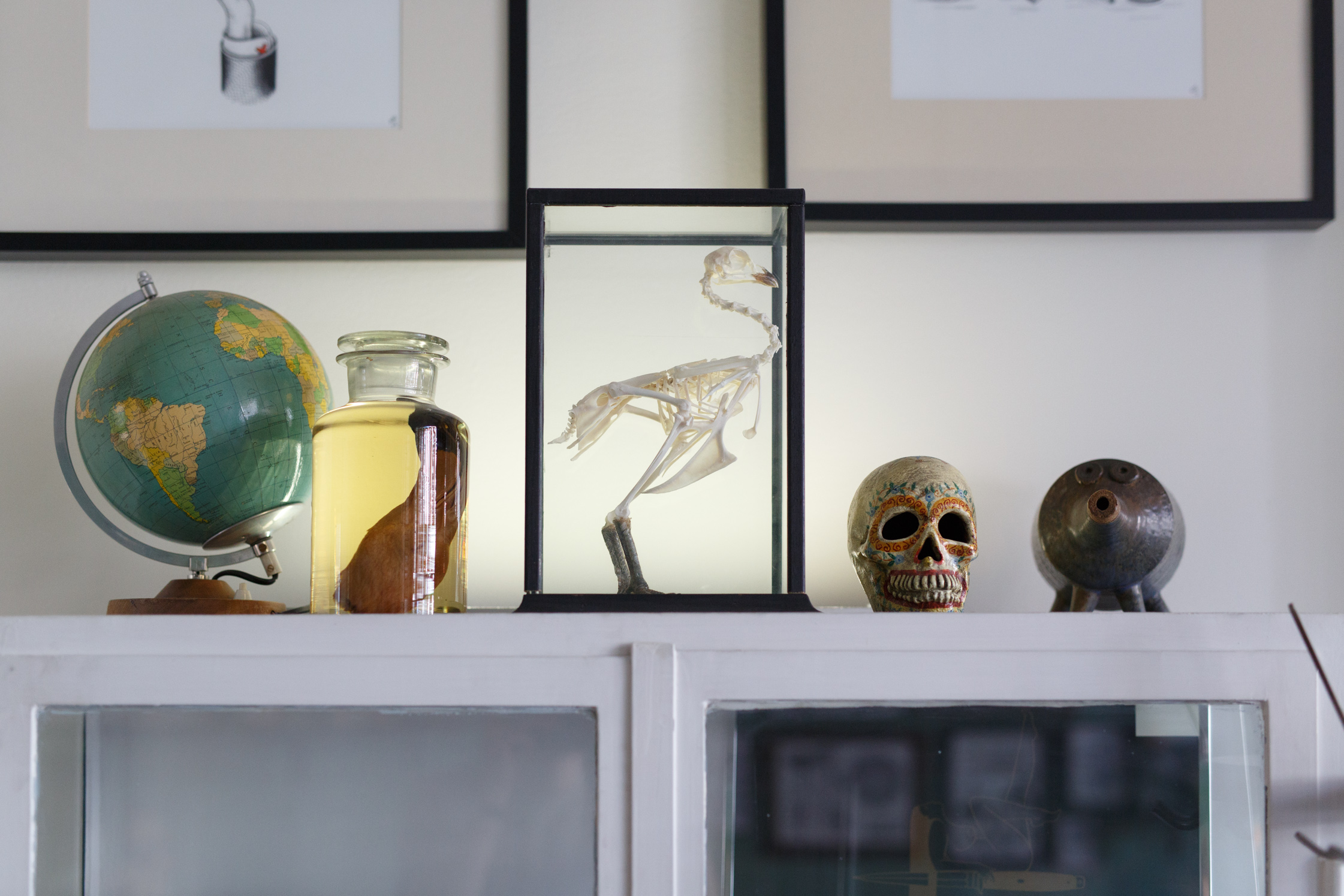
“We were looking through a dictionary for funny Spanish words and came across ‘papanatos’, an old swear word for ‘wimp’ or ‘dork’.”
-
Tell us about this space, it’s incredible.
Kim: It used to be a butcher’s shop and more recently had been a skate shop. We completely stripped the place and started over. I thought it was important that the space felt open, that people felt welcome; of course we also have the option to close off certain areas with these old hospital dividers, in case someone has to get naked—our clients always appreciate that. The walls are very busy with illustrations by myself and by people I admire; they serve as inspiration for our work, but also as a distraction for our clients.
-
What’s the story with the name Papanatos, it sounds like a Greek restaurant!
Kim: It actually traces back to a time I traveled to Spain with friends of mine. We were looking through a dictionary for funny Spanish words and came across ‘papanatos’, an old swear word for ‘wimp’ or ‘dork’. It just kind of stuck. And no one in Spain really knows it anymore. Most tattoo shops have silly names like ‘Needle Addict’ and I wanted something that was more memorable. Papanatos seems to work. But you’re right, some people do show up expecting a Greek restaurant. I just think that’s funny.
-
Speaking of shops, Karina, you just opened yours across the street. How did that happen?
Karina: Yes! It kind of just happened and I still find it hard to believe. Anne-Britt Hansen of Pearls & Swines and I were both looking for a workspace/storage space. I was working in a small room in the back of Kim’s shop and it was starting to feel too cramped; I literally felt boxed in. So Anne-Britt and I decided to join forces and before we knew it, we found this space across the street from Kim’s shop. Since it was an actual store space, we decided that we would open the doors while we were working here. We opened Frankey Sue—named after my label, Frankey, and Sue, the second name of Anne-Britt’s youngest daughter—just a few months ago.
Frankey Sue Shop
All about the perfect basics for children
“When Sam was born seven years ago, it was very difficult to find interesting clothing for boys. That’s when I first had the idea to start a children’s clothing brand.”
-
Can you tell us more about Frankey’s?
Karina: When Sam was born seven years ago, it was very difficult to find interesting clothing for boys. That’s when I first had the idea to start a children’s clothing brand, but it wasn’t the right time. We were working and traveling a lot and I didn’t feel ready for it. Two years ago, after I had our youngest son Liam, I thought, it’s now or never. I felt like I just had to do it or I’d regret it. If I failed, then I failed, but at least I had tried.
-
And how did you come up with the name?
It refers to being frank, or open and honest—which is what I love about kids.
-
How do you go about setting up a children’s clothing brand?
Karina: Well for me, it meant figuring everything out from scratch, where was I going to get the clothing items made, where would I find the fabrics. I found a sewing atelier in the North of Holland, specialized in children’s clothing, and started working with them; I loved the idea that Frankey’s was made here in the Netherlands. The first collection was unisex and very much focused on babies. Now I’ve branched out to childrenswear for ages up to four and five. But I’ve always chosen prints with more nude, subdued tints and gone for cuts that are quite bold.
-
So it’s going quite well then?
Karina: It is! I’ve learned so much along the way, everything from setting retail prices to figuring out international distribution. Many new children’s brands have also popped up over the past two years, so I’m constantly challenging myself to distinguish Frankey’s from other brands in quality and look and feel. I realized that I should go back to the basics—I want Frankey’s to be all about the perfect basics. I’ve also had to look into other production options since the demand has increased and I wasn’t able to balance the costs at the sewing atelier here in the Netherlands. I’m going to start producing in Portugal, which is luckily close enough for me to visit often and stay involved. These are all things you learn along the way.
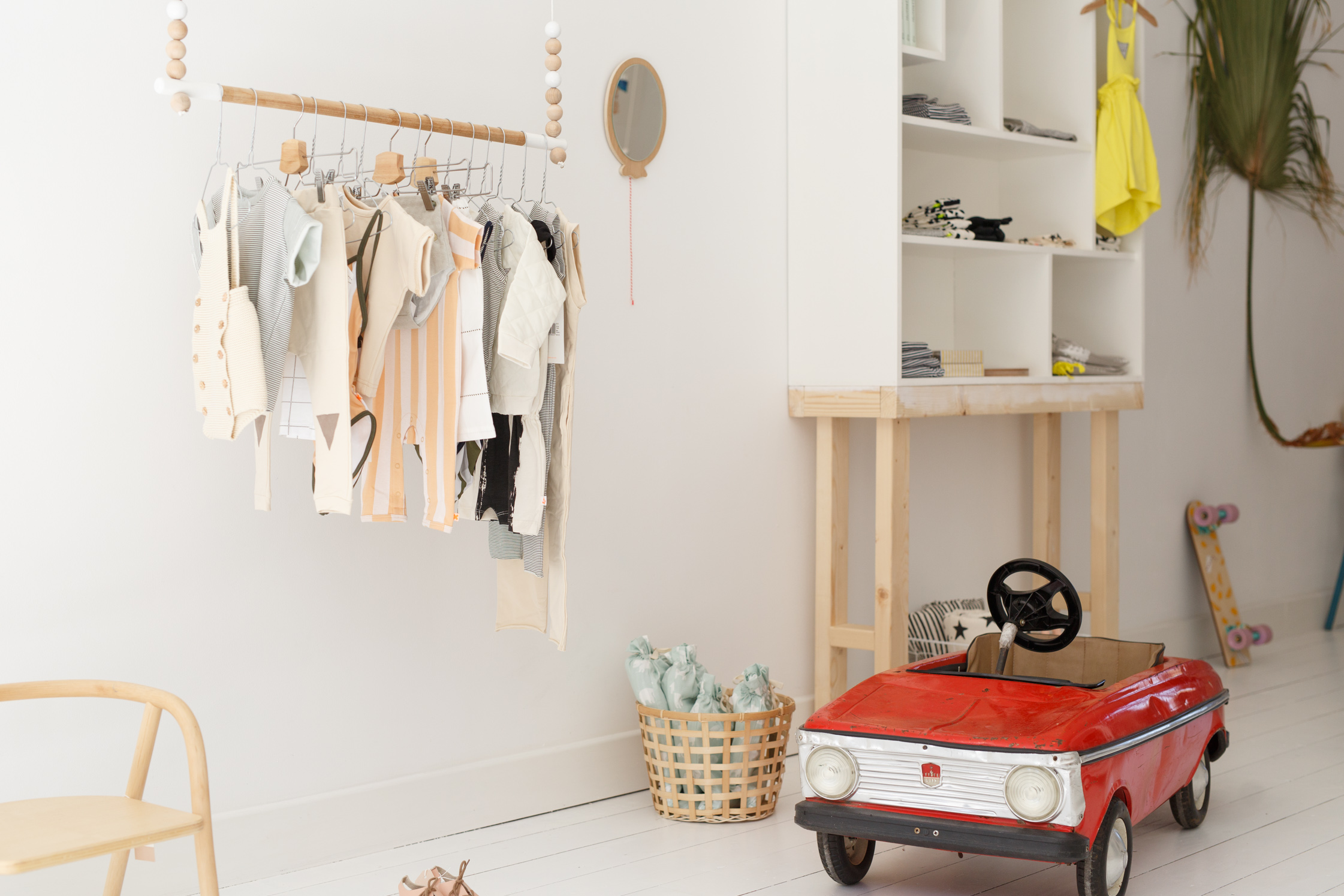
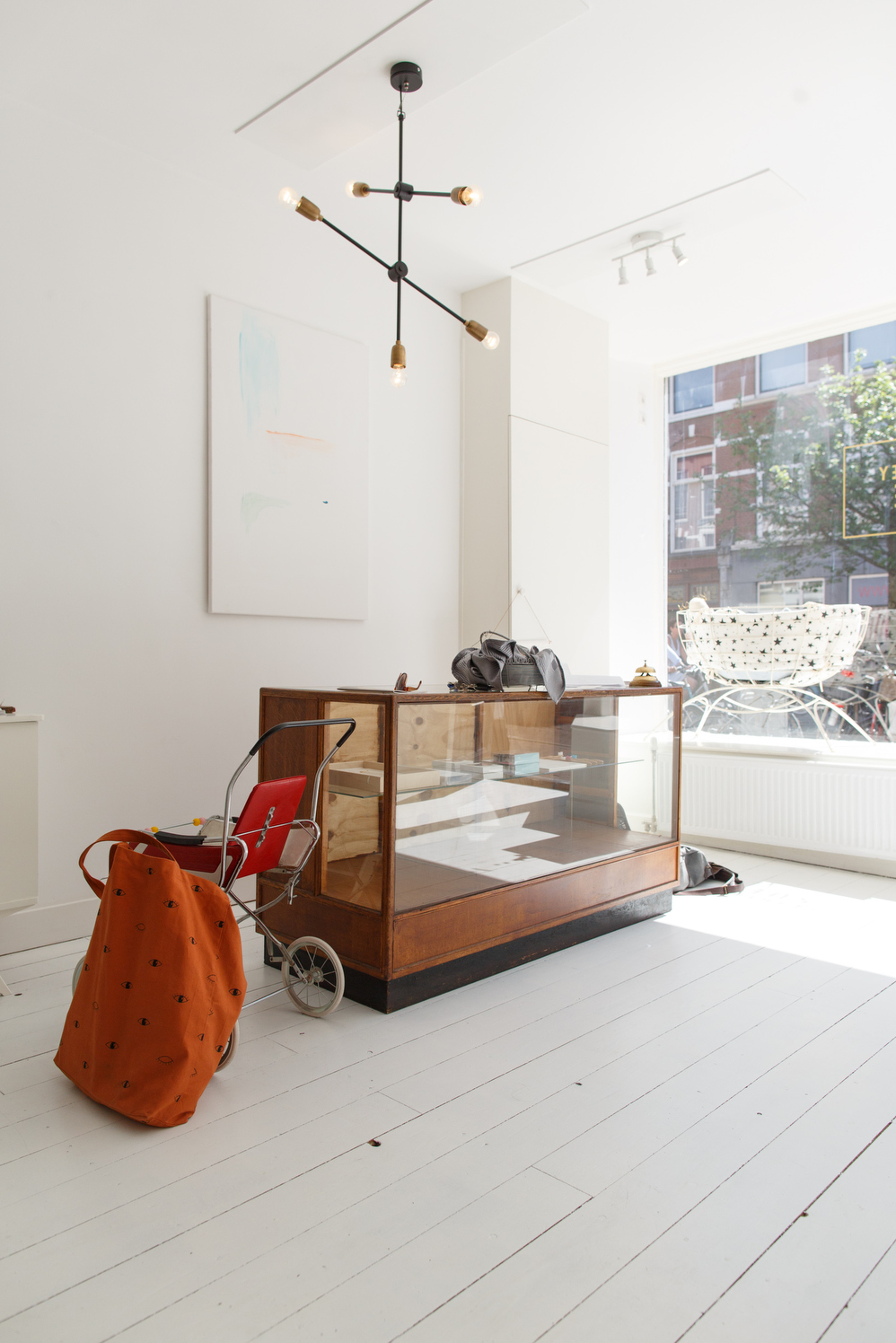


-
I’m curious though, you’re both entrepreneurs and you have a family – how do you manage?
Karina: We’ve been trying to find the right balance for a while now. Kim usually works long hours since clients want to get tattoos done after work or on the weekends. He used to work everyday of the week except Wednesday mornings, when he would spend time with the boys. When I was freelancing, I was home a lot more. Now Sam goes to school and Liam goes to daycare two days a week. We both have days that we spend with the kids, and a day that we’re together as a family. We’re also lucky to have such great parents whom we can lean on. And we try not to work when we’re home.
-
Your home is quite different to both of your shops.
Kim: As you can see, Karina can’t stand mess. If it was up to me, it would look quite different!
Karina: It’s a little eclectic; we’ve incorporated many different styles but there’s one recurring color: mint blue. It has been a constant color in my life; my childhood room was turquoise, maybe that’s why I had two boys. For the rest, it’s quite neutral. That might have to do with the fact that toys are so crazy colorful, they add enough liveliness to a space. We’ve collected a lot of antique boxes and crates to keep it all out of sight. We both love the larger stores Van Dijk & Co and Loods5, but also the Dutch online marketplace, Marktplaats.
Kim: And we have a friend who deals in secondhand furniture. We trade from time to time—furniture for tattoos.
Thank you, Kim and Karina, for inviting us into your home in The Hague. Find out more about Karina’s clothing brand Frankey’s here and her shop Frankey Sue here, and Kim’s tattoo shop Papanatos here.
For a small country, The Netherlands is full of interesting personalities; travel through the Lowlands and take a look inside the homes of creative types in Rotterdam, Amsterdam, Nieuwe Niedorp, and The Hague.
Interview: Margot van der Krogt
Photography: Jordi Huisman

